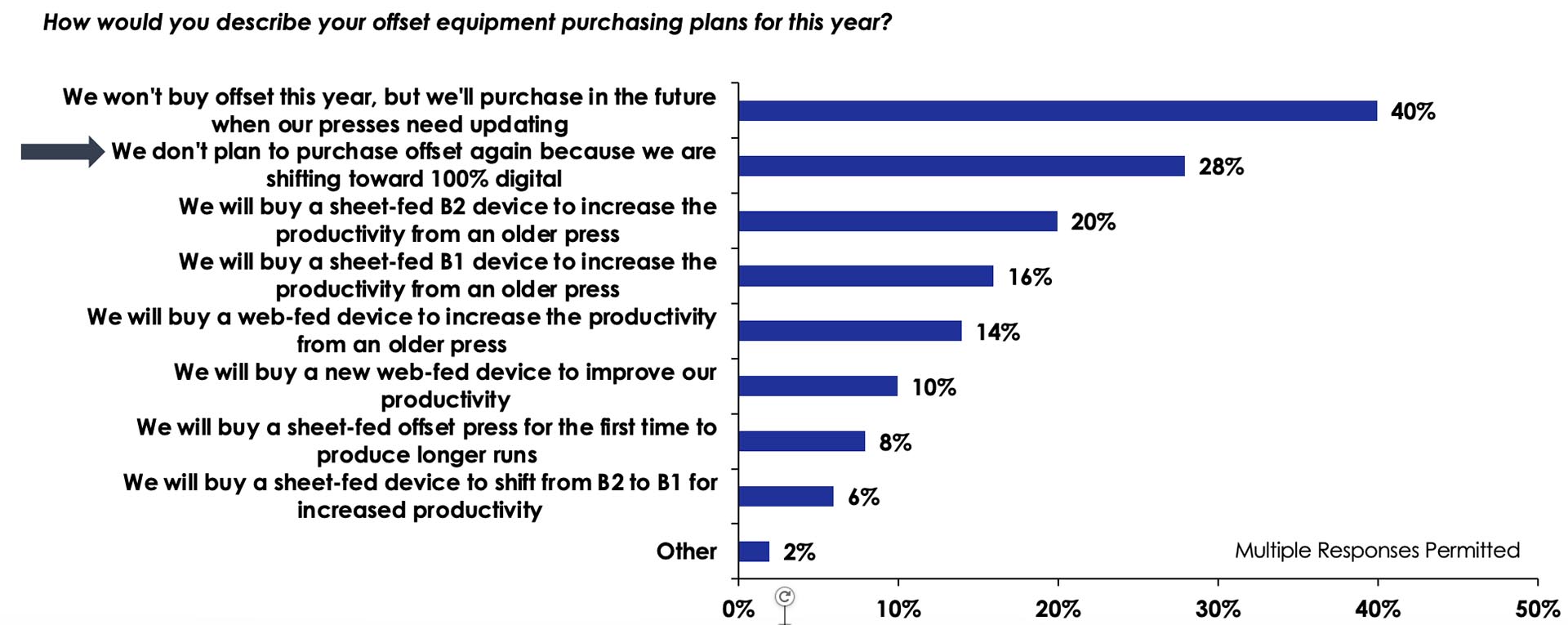- In a world where consumers can obtain most of the information they need on their own, savvy sales reps are working to ensure that they are still included in the decision-making process.
- Even with a strong business case and general agreement, few buyers will move forward without asking for a concession of some kind.
- Conducting an audit can improve your sales process, and it will likely uncover areas that can be optimized over time.
By Karen Kimerer
Introduction
Successful print sales start with defining and implementing strategies that support or strengthen the sales process. Before the widespread proliferation of the Internet, sales representatives played a major role in educating prospective buyers on products and services. Thanks to an abundance of online information, many buyers conduct a good amount of research on their own before they even engage with a sales rep. This places additional pressure on sales organizations and their reps.
Changing buyer behaviors are making it increasingly critical to understand your addressable market, reach the right prospects, and systematically move each opportunity closer to a sale. This article provides tips on creating a sales process that will engage more customers and close more business.
Why Do You Need a Sales Process?
Customers are changing their purchasing processes, and sales organizations must in turn refine their approach for attracting new and repeat business. In a world where consumers can obtain most of the information they need on their own, savvy sales reps are doing their part to ensure that they are still included in the decision-making process. It is important to understand your addressable market, reach the right prospects, and focus on what’s required to move each opportunity forward and close the sale. By developing and following a well-defined sales process, print organizations can experience continued sales efficiencies and revenue growth. According to research from Keypoint Intelligence - InfoTrends[1], print service providers (PSPs) with a documented sales process enjoy a success rate of over 50%.
Today’s successful printing businesses view their sales process as an opportunity to differentiate themselves from competitors and win more business. As shown below, research from the Corporate Executive Board indicates that the sales experience is the top reason that buyers select one company or vendor over another. A well-thought-out sales process is a key driver of a good sales experience.
Differentiating with Your Sales Process

Source: Corporate Executive Board
Steps for Developing a Successful Sales Process
You already know that developing a sales process is important, but you might be wondering how to go about establishing one that works for you. While every sales organization is unique, the sample step-by-step guide provided below is a great starting point. It should be remembered that the effectiveness of each step is dependent on executing the previous one.
- Research and Prepare: The first and most important step is to ensure that you’ve done your homework! Conduct a thorough evaluation of your prospect to ensure that you understand their business, any changes in their market, and competitive or alternative options that might eliminate their need for your products and services.
- Prospect and Engage: Create buyer personas to better understand how your potential customers educate themselves on your products and services, and where they gather their information. Having this information enables you to differentiate and engage with meaningful content and messaging.
- Qualify and Conduct a Needs Assessment: Determine and define the need. The best sales professionals ask the right questions. Helping your prospect realize that there may be a better way to achieve the results they are seeking will help you stand out from the crowd and minimize the risk of a price-based decision.
- Present the Business Case: Buyers need to know what’s in it for them and their organization. A strong business case will include a financial conversation that outlines the rewards they will gain by doing business with you. Are you saving them time, money, or enabling greater returns on their efforts? This step in the sales process enables you to demonstrate your understanding of their business and positions you as a partner, not a vendor.
- Negotiate and Close: It’s important to test for understanding as you move through the process to eliminate surprises at this point in the sales cycle. Even with a strong business case and general agreement, few buyers will move forward without asking for a concession of some kind. This might be a discount, a faster turn on the project, or add-ons that provide more value. Be prepared to address these requests so you can move quickly to gain their commitment. Time can kill deals!
- Follow Up: Don’t forget to include a thank you note—this simple step is becoming largely a lost art in the sales industry at large, but it can make a difference! This is also a great time to ask your customer to summarize in their own words why they chose your business and services. Even better, ask if they know anyone else who might benefit from your solutions.
Within each of the steps that you identify in your process, be sure to set activity requirements that need to be met before moving on to the next step.
Conduct an Audit to Strengthen Your Sales Process
Even a well-defined sales process can fail if it’s not aligned to the needs of prospects and customers. Conducting an audit can improve your sales process, and it will likely uncover areas that can be optimized over time. A quick audit should start with feedback from your existing customers; an informal survey can help you better understand the triggers that motivate customers to purchase your services. Touch base with your sales reps on a regular basis to identify any gaps in the skills required to follow the sales process. Be sure to weigh the activity goals within each step of the process against the capacity each salesperson has to effectively manage their business and opportunities. Measure the time that is required to move from one step to the next, and seek opportunities to improve the efficiency of your sales efforts.
The Bottom Line
As Peter Drucker famously stated, “You can’t manage what you can’t measure.” Taking this logic a step further, you can’t improve your sales results if you haven’t established a process to follow and a system for managing it! The true power of a sales process lies in the data and information that supports it. It is more important than ever to understand how your customers go about purchasing your products and services, the strategies that are required to gain their trust and loyalty, and the sales activities required to pull everything together. Establishing an intelligent and repeatable sales process can pay dividends in customer satisfaction and revenue growth.
[1]Source: Best Practices of High-Performance Print Sales Organizations; Keypoint Intelligence – InfoTrends 2016
Karen Kimerer, Director of InfoTrends’ Business Development Strategies consulting service, has experienced the many challenges of expanding current market opportunities and securing new business. She has developed a systematic approach to these opportunities, addressing the unique requirements of becoming a leader in our changing industry. She is well-versed in 1:1 marketing, web-to-print, direct mail, book publishing, supply chain management, data segmentation, channel integration, and photo products.









